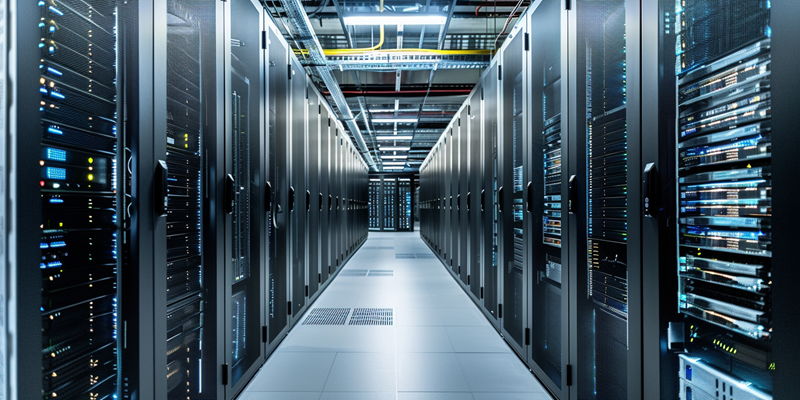Data centers, traditionally mere data storage facilities, now play a vital role in the stability of our electric grids. As we become ever more dependent on the digital world, these hubs have the capability to engage in demand response activities. This means that during times of peak demand on the power grid, data centers can adjust their energy use, providing much-needed relief and stability.
This ability not only aids in maintaining the grid but also opens up avenues for additional revenue, as data centers can earn incentives for participating in these programs. Furthermore, such strategies bring environmental benefits by reducing the need for additional power generation, which is often reliant on carbon-heavy sources.
By actively contributing to demand response initiatives, data centers are evolving into key components of a sustainable energy infrastructure. This evolution marks a shift in their role from passive users of electricity to active participants in energy management, enhancing both grid resilience and their own economic prospects.
Leveraging Backup Systems for Grid Services
Data centers are equipped with robust backup systems intended for emergency use, yet these assets often lie dormant. By participating in grid service programs, such as demand response, these standby tools can be used to alleviate the grid during high demand, which is especially critical as energy consumption soars. Not only do these services provide a financial boon to data center operators, drawing income whenever backup systems are utilized, but they also promote energy sustainability. This symbiotic relationship between data centers and the power grid helps in balancing energy supply, delaying or even negating the need for new power plants.
Data Centers in Virtual Power Plants (VPPs)
Virtual Power Plants (VPPs) are revolutionizing how we manage energy, and data centers are at the heart of this transformation. These centers have the ability to harness their energy resources collectively, contributing significantly to grid stability during peak demand periods. By integrating these energy hubs into VPPs, not only is the grid’s durability enhanced, but data centers also tap into a new revenue stream and maintain seamless operation. This synergy highlights data centers as pivotal energy assets in the modern power landscape, optimizing the utility of their expansive energy capacities. As such, incorporating data centers into VPP networks is a strategy that experts are championing, promising greater grid reliability and the unlocking of additional economic benefits for these technological powerhouses.
Aligning with Sustainability Objectives
Engagement in grid services reflects the broader commitment of data centers to Environmental, Social, and Governance (ESG) priorities. This is particularly pertinent as the industry moves away from fossil fuels towards renewable energy. However, renewable sources are not without their challenges, namely their intermittent nature. Data centers can offer grid stability solutions, bridging the gaps in renewable energy supply, and cementing their place as champions of a sustainable and reliable energy ecosystem.
The Four Ds of Grid Evolution
In today’s energy landscape, the electrical grid is increasingly defined by four key trends: Decarbonization (shifting away from fossil fuels), Decentralization (moving towards localized energy generation), Digitization (integrating advanced computing technology), and Disruption (rapid changes due to new technologies and policies). As the grid evolves, data centers must also transform. They’re being called upon to interact proactively with these new energy dynamics, rather than merely being equipped to handle them.
Modern data centers should be more than just operationally ready; they must actively participate in the grid’s changing ecology. This means data centers need to be well-integrated into the grid infrastructure to ensure they can respond to fluctuations in demand and supply. By being adaptable and responsive, data centers can play a crucial role in stabilizing and supporting an electrical grid that’s in a state of constant change, thereby facilitating a smoother transition to these new energy paradigms.
Maintaining Readiness for Demand Response
For a data center to support the grid effectively through demand response, its backup generators must be in peak condition. Regular maintenance and rigorous testing are non-negotiable to guarantee performance when called upon. Moreover, operators must navigate the complex landscape of regulatory compliance and manage logistical considerations such as ensuring a sufficient fuel supply. These are critical measures to ensure that a data center can swiftly transition to backup power in support of the grid.
Real-world Experiences in Grid Support
As pioneers in integrating data centers with grid support, industry veterans emphasize the critical importance of proper planning and adherence to established best practices to ensure a smooth switch to auxiliary power sources. These insights are born of hands-on experience in the field, showcasing the complex dynamics between these data centers and the power grid they support. Through these practical applications, a blueprint emerges, fashioned by those who have navigated the challenges firsthand. Such knowledge sharing sets a standard for enhancing the dependability and efficiency of power grids. This synergistic relationship between data centers and power grids serves as a model for operational excellence, demonstrating how preparation and best practices play pivotal roles in the functionality and resilience of our digital infrastructure.
Demand Response in Action: PJM Grid Network
The PJM grid, serving the northeastern United States, has significantly benefited from integrating data centers into demand response initiatives. These programs are crucial for maintaining the grid’s stability when faced with sudden spikes in energy demand. A remarkable case occurred on Christmas Eve, underlining the importance of these strategies. Data centers became instrumental in this instance, engaging in demand response actions that were key to averting a grid overload. Their participation highlights just how impactful data center involvement can be in these critical situations. The success in the PJM network serves as compelling evidence of the value that data centers can bring to grid services, demonstrating their potential to bolster grid reliability during periods of high stress and representing a strategic resource for keeping the energy infrastructure secure and functional.

